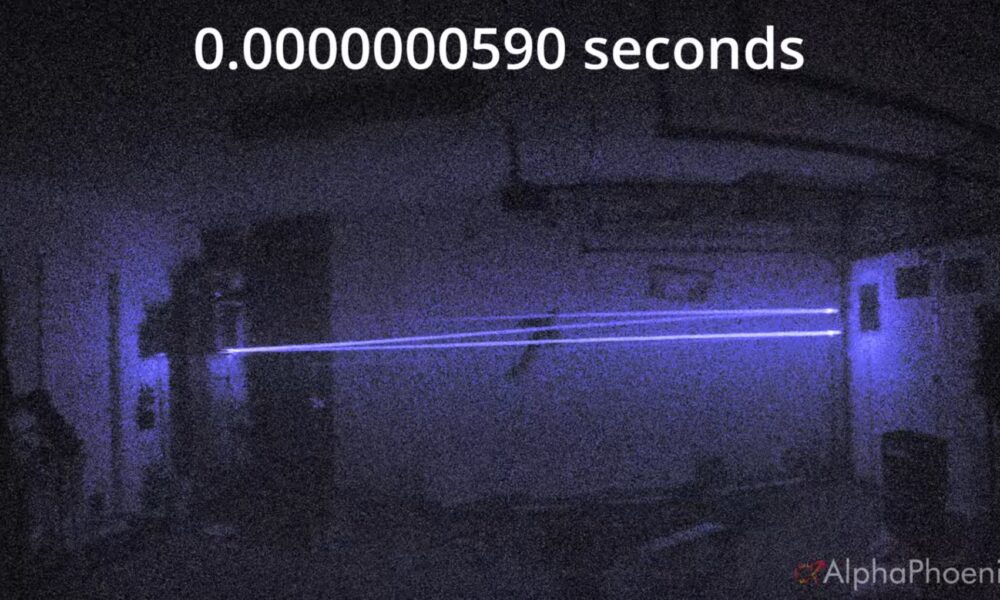A significant breakthrough in understanding cosmic rays has emerged from the Large High Altitude Air Shower Observatory (LHAASO), as scientists have linked the formation of the cosmic ray energy spectrum’s “knee” to black holes. This “knee,” characterized by a sharp decline in cosmic rays above 3 PeV, has puzzled researchers since its identification nearly 70 years ago.
On November 16, 2025, LHAASO released findings revealing that micro-quasars, which are black hole systems that accrete material from companion stars, are likely the source of this phenomenon. The studies, published in both the *National Science Review* and *Science Bulletin*, suggest that these micro-quasars act as powerful particle accelerators within the Milky Way.
Micro-Quasars as Cosmic Accelerators
The research team, which included experts from the Chinese Academy of Sciences, Nanjing University, and La Sapienza University of Rome, systematically detected ultra-high-energy gamma rays from five micro-quasars: SS 433, V4641 Sgr, GRS 1915+105, MAXI J1820+070, and Cygnus X-1. Notably, the ultra-high-energy radiation from SS 433 was found to align with a giant atomic cloud, indicating that high-energy protons are likely accelerated by the black hole and collide with surrounding matter.
The proton energy in this system exceeded 1 PeV, releasing energy equivalent to approximately 10^32 joules per second, which is comparable to the output of four trillion of the most powerful hydrogen bombs. Meanwhile, V4641 Sgr exhibited gamma-ray energy reaching 0.8 PeV, reinforcing its status as a “super PeV particle accelerator.” These findings highlight micro-quasars as formidable sources of high-energy cosmic rays, addressing a longstanding issue in cosmic ray research.
Challenges in Cosmic Ray Measurement
Understanding the cosmic ray spectrum, particularly in the knee region, requires precise measurements of various cosmic ray species. However, detecting these particles is challenging due to their sparse presence and the limitations of satellite detectors. Ground-based measurements are complicated by atmospheric interference, making it difficult to distinguish protons from other nuclei.
Utilizing its advanced observational equipment, LHAASO developed multi-parameter measurement techniques that enabled the selection of a large statistical sample of high-purity protons. This achievement allowed for precise measurement of their energy spectrum, revealing an unexpected structure that displayed a new “high-energy component,” rather than a simple transition between power-law distributions.
The discoveries from LHAASO, along with data from the AMS-02 and DArk Matter Particle Explorer (DAMPE) experiments, indicate the existence of multiple cosmic ray accelerators in the Milky Way. Each of these accelerators exhibits unique capabilities and energy ranges, with the knee representing the upper limit of the acceleration potential of these sources.
Recent findings underscore the role of micro-quasars as significant contributors to cosmic ray origins. Unlike supernova remnants, which historically were believed to be the primary source of cosmic rays, recent observations demonstrate that they cannot accelerate cosmic rays to the energies observed at the knee and beyond.
The connection between black holes and cosmic rays has profound implications for our understanding of the universe. LHAASO’s innovative hybrid detector design allows for the detection of cosmic ray sources via ultra-high-energy gamma rays while enabling accurate measurements of cosmic ray particles nearby.
This research not only advances the scientific community’s knowledge of cosmic ray origins but also illustrates the complex physical processes associated with black hole systems. For the first time, the structure of the knee has been observationally linked to a specific astrophysical source—black hole jets.
As LHAASO continues to lead high-energy cosmic-ray research, its findings hold promise for further breakthroughs in astrophysical studies and our understanding of the universe’s most extreme phenomena.







